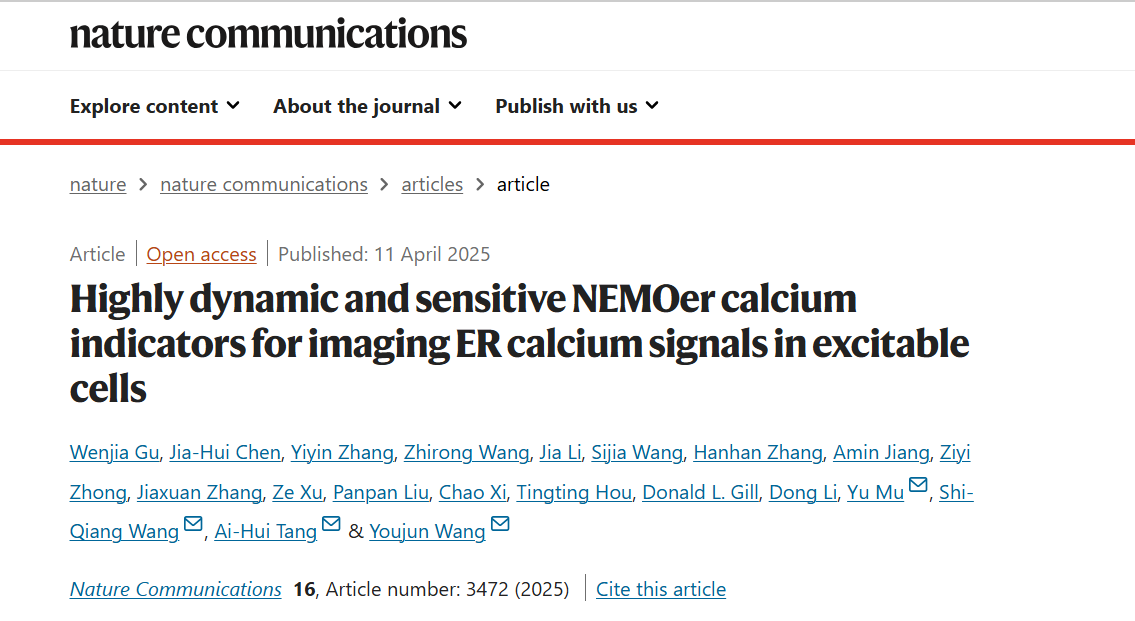Professor Wang Youjun's Research Group From the College of Life Sciences and Their Collaborators Published an Article in Nature Communications
On April 11, Professor Wang Youjun's research group from the College of Life Sciences and their collaborators published an article titled "Highly dynamic and sensitive NEMOer calcium indicators for imaging ER calcium signals in excitable cells" in Nature Communications.

The abstract of the paper is as follows:
The Endoplasmic/sarcoplasmic reticulum (ER/SR) is central to calcium (Ca2+) signaling, yet current genetically encoded Ca2+ indicators (GECIs) cannot detect elementary Ca2+ release events from ER/SR, particularly in muscle cells. Here, we report NEMOer, a set of organellar GECIs, to efficiently capture ER Ca2+ dynamics with increased sensitivity and responsiveness. NEMOer indicators exhibit dynamic ranges an order of magnitude larger than G-CEPIA1er, enabling 2.7-fold more sensitive detection of Ca2+ transients in both non-excitable and excitable cells. The ratiometric version further allows super-resolution monitoring of local ER Ca2+ homeostasis and dynamics. Notably, NEMOer-f enabled the inaugural detection of Ca2+ blinks, elementary Ca2+ releasing signals from the SR of cardiomyocytes, as well as in vivo spontaneous SR Ca2+ releases in zebrafish. In summary, the highly dynamic NEMOer sensors expand the repertoire of organellar Ca2+ sensors that allow real-time monitoring of intricate Ca2+ dynamics and homeostasis in live cells with high spatiotemporal resolution.

The link of the paper:


